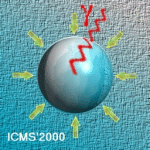
ICMS'2000
The International Conference on Multiphase Systems, ICMS'2000
Ufa, RUSSIA, June 15-17, 2000
Safieva R., Syunyaev R., Safin R.
Russian State University of Oil and Gas named after I.M.Gubkin Moscow, RUSSIA
Actually the disperse state of oil systems is necessary state between molecular or microscopic and macroscopic levels of description. As a rule the technological processes of the production, transportation, refinery and using of the oil systems are followed by the phase transitions. The differences in the level of intermolecular forces between the components lead to dispersion of the system in phase transition regions. The properties of oil systems at the disperse state define their nonlinear macroscopic response to the value of external influence.
Due to variety of phase transitions under definite thermodynamic conditions the dispersity degree of oil systems is resulted by two main reasons. The first one is the presence in oil systems the phase-forming highmolecular components: asphaltenes and wax. In the second case the disperse particles constructed from low-molecular components appear.
The dynamical model of disperse particle is suggested for describing the phenomena as at bulk as at surface phases. The particle, named complex structural unit, has a nucleus surrounded by solvate shell. The parts of the units can change their shapes and sizes under external influences. In many cases the extremal values of macroscopic technological parameters (aggregate stability, viscosity, temperatures of freezing etc.) correlates with extremal meanings of the unit sizes. Some examples of extremal behavior of oil disperse systems and possibility of their using in processes of oil industry are presented.